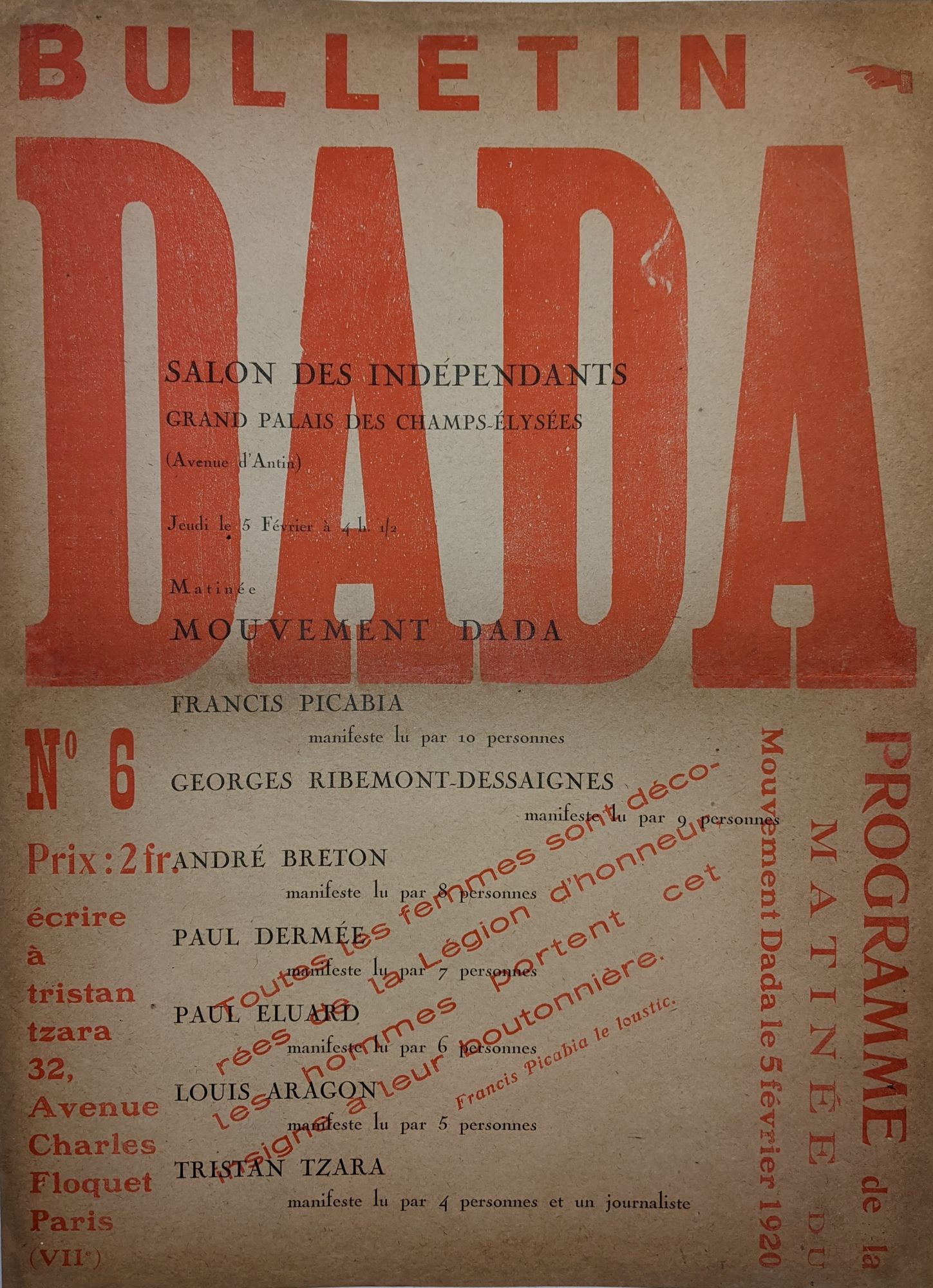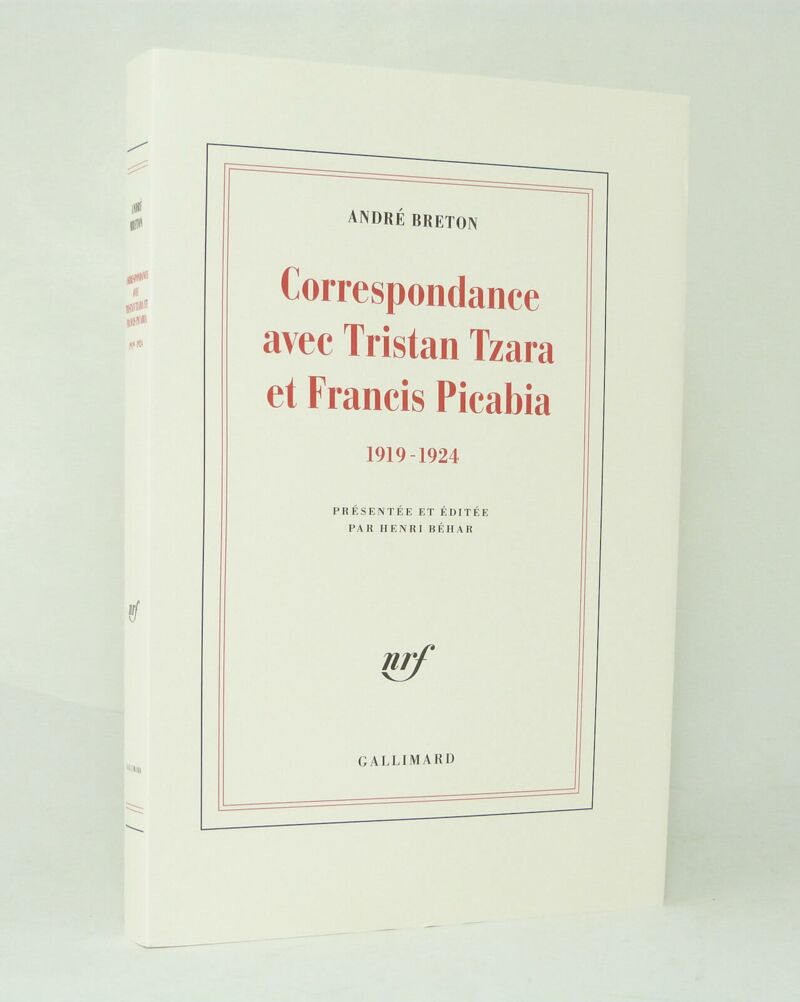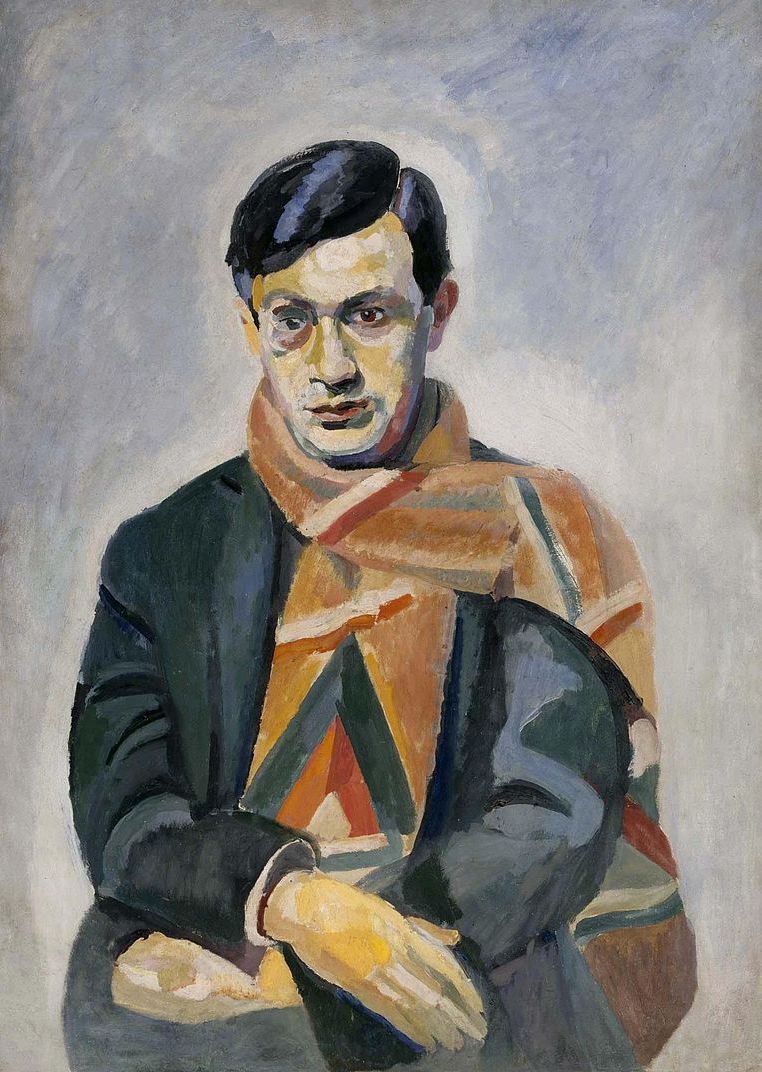
tristan Tzara et Francis Picabia Tristan Tzara et Francis Picabia
Francis Picabia ( French: [fʁɑ̃sis pikabja]: born Francis-Marie Martinez de Picabia; 22 January 1879 - 30 November 1953) was a French avant-garde painter, writer, filmmaker, magazine publisher, poet, and typographist closely associated with Dada. [1]

Francis Picabia Marcel Duchamp, Paul Klee, Magritte, Tristan Tzara
Tristan Tzara (French: [tʁistɑ̃ dzaʁa]; Romanian: [trisˈtan ˈt͡sara]; born Samuel or Samy Rosenstock, also known as S. Samyro; 28 April [O.S. 16 April] 1896 - 25 December 1963) was a Romanian avant-garde poet, essayist and performance artist.. Francis Picabia: Our Heads Are Round so Our Thoughts Can Change Direction. Nov 21, 2016.

Bulletin Dada No.6 Tristan Tzara, Francis Picabia First edition
In addition to 391, Picabia produced another journal, Cannibale, while contributing to Tristan Tzara's Dada, Paul Éluard's Proverbe, and André Breton's Littérature. So, along with Éluard.

Optophone I Francis Picabia WikiArt. Tristan Tzara, Op Art, Marcel
FRANCIS PICABIA 1879 - 1953 UNTITLED (À TRISTAN TZARA) Signed Francis Picabia and dedicated à Tristan Tzara (lower right) Brush and ink and pencil on paper 8½ by 7⅛ in. (21.5 by 18 cm) Framed: 16½ by 14½ in. (41.9 by 36. 8 cm) Executed circa 1919. Condition report Provenance Tristan Tzara, Paris (acquired from the artist by 1963)

Ernst Wilde Photos from Ernst Wilde's post Tristan tzara, Dada art
Directeur: Francis Picabia (Paris 1879-1953 Paris) Zurich 1919 8 unpaginated pages, 7 illustrations, 43.8 × 27.5 cm Original brochure. After Tristan Tzara had got in touch with him, Picabia, the Dadaist "funny guy," was keen to experience the adventure Dada on site and decided to stay in a hotel in Zurich for two weeks.

Francis Picabia Artistas, Pinturas, Arte
Francis Picabia's stay in Switzerland made itself felt: Tzara was very keen on getting in touch with him. Both wrote emphatic obituaries on Guillaume Apollinaire, who had died in November 1918. Edition: According to Tristan Tzara (see his letter to Francis Picabia, September 7, 1918), Dada 3 was printed in an edition of two thousand copies.

Correspondance avec Tristan Tzara et Francis Picabia (19191924
Tristan Tzara Romanian-born French poet and essayist known mainly as the founder of Dada, a nihilistic revolutionary movement in the arts, the purpose of which was the demolition of all the values of modern civilization. The Dadaist movement originated in Zürich during World War I, with the. Francis Picabia, and Marcel Duchamp. Tzara wrote.

Literature, Francis Picabia Art Experience NYC 絵
The next five issues of Picabia's journal reveal turmoil growing among the Dadaists and suggestions of a shift in Picabia's allegiance from Tzara to Breton. By issue number 16, it was clear that Picabia had left the Dada movement and was focusing on the activities of a newly forming group under the guidance of Breton. In the nineteenth and.

Cumple 100 años el dadaísmo, la vanguardia que postulaba la vida como
Francis Picabia was a French painter, illustrator, designer, writer and editor, who was successively involved with the art movements Cubism, Dada, and Surrealism. He was the son of a Cuban diplomat father and a French mother.

Francis Picabia. Untitled. 1917 Dada art movement, Funny art history
Gli artisti come Picabia e Tzara Soluzioni - otto lettere: DADAISTI Per le curiosità vedi: Gli artisti che seguirono Picabia e Tzara {Il primo Novecento fu segnato dall'esplosione di avanguardie artistiche disseminate in vari punti d'Europa, che impressero una svolta significativa.}. Trova definizione: (oppure Ricerca parole parziali)

picabia Tristan Tzara, Marcel Duchamp, Man Ray, Max Ernst, Collages
PICABIA, Francis (1879-1953). Unique eunuque. Introduction by Tristan Tzara. Paris: Au Sans Pareil, 1920. 8° (186 x 137mm). Printed notice of publication laid-in. Self-portrait frontispiece. (Paper evenly yellowed, the front blank with some staining from the front wrapper touching the inscription.) Original wrappers printed in black (spine with a long tear, edges browned, light soiling); in a.

Edtaonisl (Ecclesiastico). 1913. Chicago Institute of Art Action
Tristan Tzara ( French: [tʁistɑ̃ dzaʁa]; Romanian: [trisˈtan ˈt͡sara]; born Samuel or Samy Rosenstock, also known as S. Samyro; 28 April [ O.S. 16 April] 1896 [1] - 25 December 1963) was a Romanian avant-garde poet, essayist and performance artist.

Francis Picabia Tristan Tzara, Marcel Duchamp, Braque, Paul
DADA became an important artistic movement in its various expressions in literature, painting, sculpture, theater, film and music, focusing on chance, abstraction, humor and the unconscious. In 1919, Picabia contributed to the Salon d'Automne in Zürich, and with Tristan Tzara, to the publication of DADA 4-5. Returning to Paris, he became one.

André Breton, Correspondance avec Tristan Tzara et Francis Picabia En
After his Paysages impressionnistes, Espagnoles, Caouchouc (1909) - considered by some the first abstract painting - and following his Dada period, his mechanical drawings, his departure for New York in 1915, meeting Tzara in Zurich in 1919, The Animal Trainer in 1922, and his involvement in the ballet, Entr'acte; by 1927, with the Transparencies series, Picabia was trying to find the third.

Picabia, the provocateur, was back home. Picabia continued his involvement in the Dada movement through 1919 in Zürich and Paris, before breaking away from it. He denounced Dada in 1921, and issued a personal attack against Breton in the final issue of 391, in 1924.

tristan Tzara et Francis Picabia Tristan Tzara et Francis Picabia
The Gas Heart or The Gas-Operated Heart (French: Le Cœur à gaz) is a French-language play by Romanian-born author Tristan Tzara.It was written as a series of non sequiturs and a parody of classical drama—it has three acts despite being short enough to qualify as a one-act play.A part-musical performance that features ballet numbers, it is one of the most recognizable plays inspired by the.